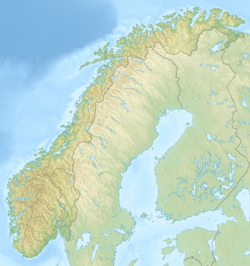| Sparagmite Formation | |
|---|---|
| Stratigraphic range: Cambrian Stage 3 ~ | |
| Type | Formation |
| Lithology | |
| Primary | Shale |
| Other | Sandstone |
| Location | |
| Coordinates | 60°54′N10°42′E / 60.9°N 10.7°E |
| Approximate paleocoordinates | 40°18′S24°06′W / 40.3°S 24.1°W |
| Country | Norway |
The Sparagmite Formation is a geologic formation in Norway. It preserves fossils dating back to the Cambrian period.
